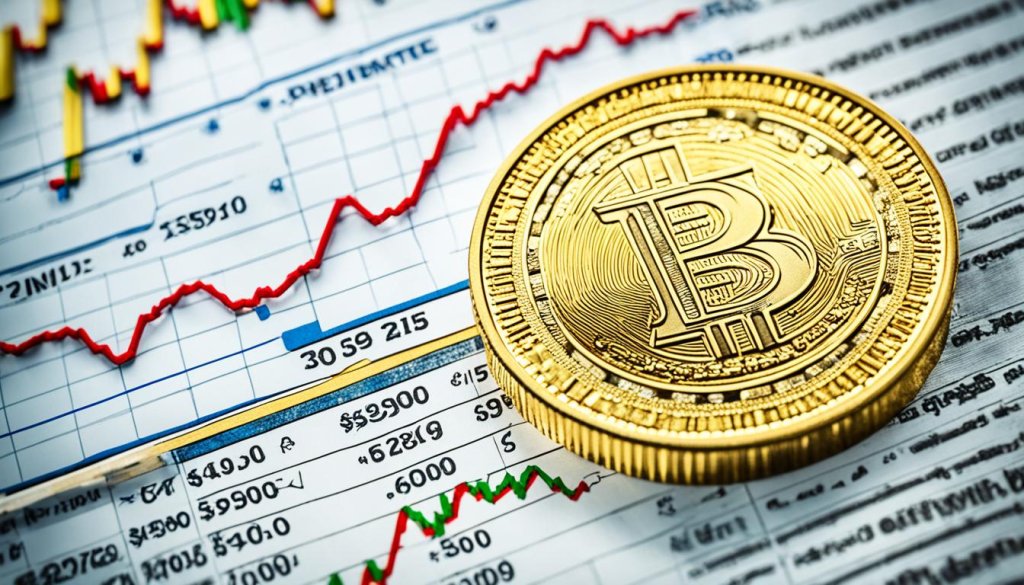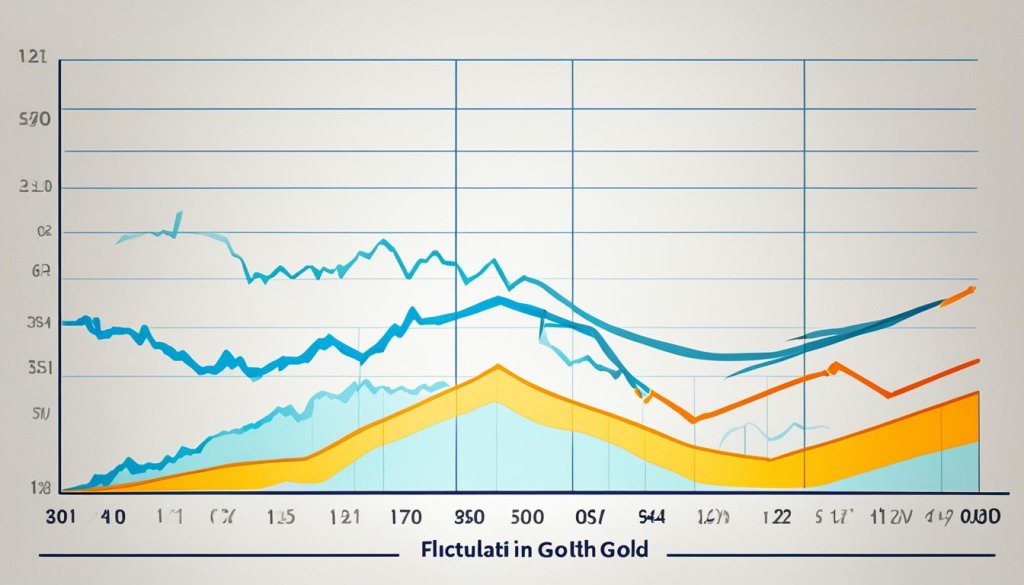Looking to invest in gold? Curious about the current value of one ounce of gold? You’re in the right place! In this article, we’ll explore the latest updates on the value of one ounce of gold and provide key insights into the factors influencing its price.
As of the most recent data, the current value of one ounce of gold is $2,000. This price reflects a small increase of 0.32% from yesterday’s gold price of $1,994. While gold prices may vary on a daily basis, keeping an eye on the current gold price is crucial for any potential investor.
Over the past week, the price of gold has seen a decline of 1.73%. Additionally, in comparison to one month ago, the price has experienced a decrease of 1.35%. It’s important to note that the 52-week high for gold stands at $2,079, while the 52-week low is $1,991. These fluctuations highlight the dynamic nature of the gold market.
Whether you’re considering investing in gold or simply curious about its value, stay tuned to our informative articles. We’ll dive deeper into the factors that affect the price of gold, explore different investment options, and provide insights into gold as an inflation hedge.
Remember, investing in gold can be a wise decision for diversification and protecting against risks. However, it’s crucial to conduct thorough research and consider various factors before making any investment decision. Let’s get started on your gold investment journey!
Factors Affecting the Price of Gold
The price of gold is influenced by various factors that contribute to its volatility in the market. Understanding these key factors can help investors make informed decisions regarding gold investments.
Supply and Demand:
The fundamental principle of supply and demand plays a significant role in determining the price of gold. When the demand for gold exceeds its supply, prices tend to rise, and vice versa. Factors such as mining production, exploration activities, and recycling contribute to the overall supply of gold. On the demand side, factors such as jewelry production, industrial uses, and investment demand can impact the price.
Currency Fluctuations:
Gold prices are influenced by currency fluctuations, especially changes in the value of the US dollar. As gold is priced in US dollars internationally, a weaker dollar tends to increase the demand for gold as it becomes cheaper for buyers in other currencies. Conversely, a stronger dollar can suppress demand for gold, resulting in lower prices.
Inflation Risks:
Gold has long been regarded as a potential hedge against inflation. When there are concerns about rising inflation rates, investors turn to gold as a store of value. The limited supply of gold makes it resistant to inflationary pressures, leading to an increase in demand and prices. However, it’s important to note that gold’s ability to protect against short-term inflation risks may vary, and long-term trends should be considered.
Geopolitical Risks:
Geopolitical uncertainties can significantly impact the price of gold. Geopolitical events such as political instability, conflicts, economic sanctions, or trade disputes can create a sense of uncertainty in the global markets. During times of heightened geopolitical risks, investors tend to flock to safe-haven assets like gold, driving up its demand and prices.
Understanding these factors is crucial for investors looking to navigate the gold market effectively. By keeping an eye on supply and demand dynamics, currency fluctuations, inflation risks, and geopolitical uncertainties, investors can make informed decisions when it comes to gold investments.
Investing in Gold
Gold is often viewed as a safe-haven asset and a means of diversifying investment portfolios. Investing in gold provides various opportunities for individuals looking to capitalize on its potential benefits. Here are some ways you can invest in gold:
Purchasing Gold Bars, Coins, and Jewelry
One popular method of investing in gold is by purchasing physical gold in the form of bars, coins, or jewelry. These tangible assets offer the advantage of direct ownership and can be securely stored or displayed. Whether you prefer the convenience of bars, the historical significance of coins, or the aesthetic appeal of jewelry, consider these options when adding gold to your portfolio.
Investing in Gold Stocks
Investors can also participate in the gold market by buying stocks of companies involved in gold mining or processing. These stocks provide exposure to the gold industry without the need to own physical gold. It’s important to research and carefully select companies based on factors like their financial stability, production efficiency, and growth potential.
Gold Futures Contracts
For those interested in speculating on future gold prices, gold futures contracts provide an avenue for investment. These contracts enable you to buy or sell a specified amount of gold at a predetermined price on a future date. Trading gold futures allows you to capitalize on price fluctuations without direct ownership of physical gold.
Gold Funds: Mutual Funds and ETFs
Another way to invest in gold is through mutual funds or exchange-traded funds (ETFs) that focus on gold. These funds pool investors’ money to purchase gold assets collectively. Gold funds provide diversification and professional management, making them attractive options for those seeking exposure to the gold market.
When considering investing in gold, it’s crucial to assess your financial goals, risk tolerance, and investment time horizon. Gold can offer stability and potentially act as a hedge against economic uncertainties, but like any investment, it comes with its own set of risks and considerations. Conduct thorough research and consult with a financial advisor to determine the best approach based on your specific circumstances.
Should You Invest in Gold?
Investing in gold can be a smart strategy for hedging against risks and diversifying your investment portfolio. Gold has long been regarded as a safe-haven asset, offering stability in uncertain times. Its value tends to rise when other investments, such as stocks or currencies, experience volatility.
One of the key benefits of investing in gold is its potential to act as a hedge against inflation. Historically, gold has maintained its value over the long term and has even outperformed other assets during periods of high inflation.
However, when it comes to long-term appreciation, gold may not be the best option. Over the past five years, the price of gold has appreciated by approximately 36%, while the total return of the S&P 500 has been 60%. This highlights the importance of considering your investment goals and the overall market conditions before choosing to invest in gold.
Benefits of Investing in Gold:
- Risk Hedging: Gold can act as a hedge during times of economic uncertainty and market volatility.
- Portfolio Diversification: Adding gold to your investment portfolio can help spread risk and reduce overall volatility.
- Safe-Haven Asset: Gold is often seen as a store of value and can provide stability during turbulent economic conditions.
Considerations for Investing in Gold:
- Long-Term Appreciation: While gold may offer stability, other assets like stocks have the potential for higher long-term returns.
- Market Conditions: It’s important to assess the current market environment and evaluate whether gold is poised for growth.
Ultimately, the decision to invest in gold should be based on your individual financial goals and risk tolerance. While gold can be a valuable addition to a diversified portfolio, it’s important to weigh the potential benefits against other investment options.
Gold as an Inflation Hedge
Gold has long been recognized as an effective hedge against inflation over the course of decades or even centuries. Its intrinsic value and limited supply make it a popular choice for investors looking for long-term protection against inflationary pressures.
However, it’s essential to understand that gold’s ability to act as a near-term hedge against inflation can be affected by short-term price fluctuations. While gold has historically demonstrated its value as an inflation hedge over the long run, its price can be subject to temporary ups and downs.
For example, during the 1980s when annual inflation averaged 6.5%, the price of gold experienced an annual average decline of 10%.
It’s worth noting that recent inflation data reveals a growing disconnect between gold prices and inflation rates. While gold prices have remained relatively flat or slightly down, inflation rates have been steadily increasing. Therefore, it’s important to consider other factors and economic indicators when assessing the short-term effectiveness of gold as an inflation hedge.

Gold Spot Price and Spot Market
The gold spot price refers to the current market price for immediate delivery of gold. This price is determined by several factors, including supply and demand in the market, currency values, and current events that may impact the gold market.
Typically, the spot price is quoted per troy ounce in US dollars, but it can also be quoted per gram or per kilo. This provides flexibility for investors of different needs and preferences.
The spot market enables the trading and exchange of gold at the current spot price. It serves as a platform where buyers and sellers can engage in transactions based on the prevailing market conditions. This allows investors to access the current market value of gold and make informed decisions when buying or selling.
In the context of the spot market, investors can monitor the spot gold price per ounce, spot gold price per gram, and spot gold price per kilo to gauge the current value of gold in different measurements. This information helps them stay updated on the market and make well-informed investment choices.
Buying and Selling Gold
When it comes to buying and selling gold, there are a few key factors you need to consider:
- Spot Price: The spot price of gold serves as a reference point for determining the value of the metal at any given time. It represents the current market price for immediate delivery.
- Fees and Premiums: When buying gold from vendors, it’s important to be aware that they often add fees and premiums to the spot price. These additional costs are necessary for vendors to cover expenses such as acquiring, storing, and insuring the gold, as well as making a profit.
- Selling Price: If you’re selling gold, the spot price serves as the basis for determining the selling price. However, keep in mind that there may be additional costs or spreads between the bid and ask prices. It’s essential to consider these factors to maximize your return.
- Gold Vendors: When buying or selling gold, it’s crucial to choose reputable and trustworthy vendors. Look for vendors with a solid reputation, a transparent pricing structure, and excellent customer reviews. This ensures a smooth and secure transaction.
Remember, buying and selling gold can be a lucrative investment strategy, but it’s important to have a thorough understanding of the spot price, fees, premiums, and reputable gold vendors. By making informed decisions, you can navigate the gold market with confidence and achieve your investment goals.

Gold Futures Contracts and Gold ETFs
When it comes to investing in gold, there are various options available to suit different investment strategies and preferences. Two popular methods are gold futures contracts and gold ETFs.
Gold Futures Contracts
Gold futures contracts allow investors to speculate on the future price of gold without owning the physical metal. These contracts involve an agreement to buy or sell a specific quantity of gold at a predetermined price on a future date. Traders can profit by correctly predicting whether the price of gold will rise or fall.
Gold futures contracts provide an avenue for short-term trading and offer potential returns based on the price movements of gold. However, it’s important to note that trading futures contracts involves a higher level of risk and requires a deep understanding of the market dynamics.
Gold ETFs
Gold ETFs, or exchange-traded funds, are investment funds that aim to track the price of gold. These funds hold physical gold or invest in derivatives linked to gold prices. By buying shares of a gold ETF, investors gain exposure to the performance of gold prices without having to directly own or store physical gold.
Gold ETFs provide a convenient way for investors to access the gold market and participate in its potential upside. They offer flexibility, lower transaction costs, and ease of buying and selling compared to physical gold.
However, it’s important to understand that investing in gold ETFs means owning paper gold rather than physical gold. This distinction is crucial for investors who prefer the tangible asset or are concerned about the counterparty risk associated with holding paper gold.
Deciding between gold futures contracts and gold ETFs ultimately depends on an investor’s objectives, risk tolerance, and investment horizon. Some investors may prefer the flexibility and potential profits of futures contracts, while others may opt for the simplicity and liquidity of ETFs.
Gold Price Fluctuations and Volatility
Investors in the gold market should be aware of the inherent volatility and rapid price changes that can occur. The value of gold is known for its tendency to fluctuate over time, subject to various factors and market conditions.
Market fluctuations play a significant role in driving the volatility of gold prices. Speculative activities, economic indicators, and global events can all have profound impacts on the demand and supply of gold, causing prices to rapidly rise or fall.
Economic conditions, such as inflation rates or interest rate changes, can significantly influence gold prices. During times of economic uncertainty or heightened inflation risks, investors often seek the stability and potential value preservation that gold offers, leading to increased demand and subsequent price movements.
Global events, whether geopolitical or economic in nature, can create waves of market uncertainty and investor sentiment changes. The reactions to such events can dramatically affect gold prices, as investors turn to gold as a safe haven asset during times of turmoil.
Investors should be aware that the gold market can experience rapid price changes within short periods. Fluctuations in gold prices can either present opportunities for investors or pose risks, depending on their investment strategies and risk tolerance.

Gold Price Trends and Historical Data
The price of gold has shown a diverse range of trends throughout history, with periods of both upward and downward movement. Understanding these trends is essential for investors looking to make informed decisions about gold as an investment.
By analyzing historical gold prices, investors can gain insights into the average annual returns of this precious metal. While gold may not always outperform other asset classes in terms of short-term returns, it has proven to be a resilient and valuable long-term investment option.
Examining historical data also provides valuable context for understanding the performance of gold in different market conditions. By studying past trends, investors can identify patterns and make more informed decisions about when to buy and sell gold, optimizing their investment strategies for maximum potential returns.
FAQ
What is the current value of one ounce of gold?
The current value of one ounce of gold is ,000.
How does the price of gold fluctuate?
The price of gold is influenced by factors such as supply and demand dynamics, currency fluctuations, inflation risks, and geopolitical uncertainties.
What are the different ways to invest in gold?
There are several ways to invest in gold, including purchasing gold bars, gold coins, or gold jewelry. Investors can also consider buying stocks of gold mining or processing companies, investing in gold futures contracts, or opting for gold funds such as mutual funds or exchange-traded funds (ETFs).
Is investing in gold a good idea?
Investing in gold can be beneficial for hedging against risks and adding diversification to your investment portfolio. However, it’s important to consider your investment goals and the overall market conditions before deciding to invest in gold.
Can gold be used as an inflation hedge?
Gold has been considered an effective hedge against inflation over long periods of time, measured in decades or centuries. However, short-term price fluctuations make it a poor near-term hedge for inflation.
What is the gold spot price and spot market?
The gold spot price is the current market price for immediate delivery of gold. It is determined by factors such as supply and demand, currency values, and current events. The spot market allows for the trading and exchange of gold at the current spot price.
What should I consider when buying and selling gold?
When buying gold, it’s important to consider the spot price as a reference, but keep in mind that vendors often add fees and premiums to their prices. When selling gold, the spot price is used as a basis for determining the selling price, but there may be additional costs or spreads between the bid and ask prices.
What are gold futures contracts and gold ETFs?
Gold futures contracts allow investors to speculate on the price of gold without owning physical gold. Gold ETFs are investment funds that provide exposure to gold prices through shares traded on exchanges. While both offer convenient ways to invest in gold, they do not involve direct ownership of physical gold.
Why is the price of gold highly volatile?
The price of gold can be highly volatile and subject to rapid fluctuations due to factors such as market speculation, economic conditions, global events, and investor sentiment.
What do historical data reveal about gold price trends?
Historical data reveals that gold prices have exhibited both upward and downward trends over time. While gold can be an effective long-term investment, it’s important to consider average annual returns and compare them with other asset classes.




